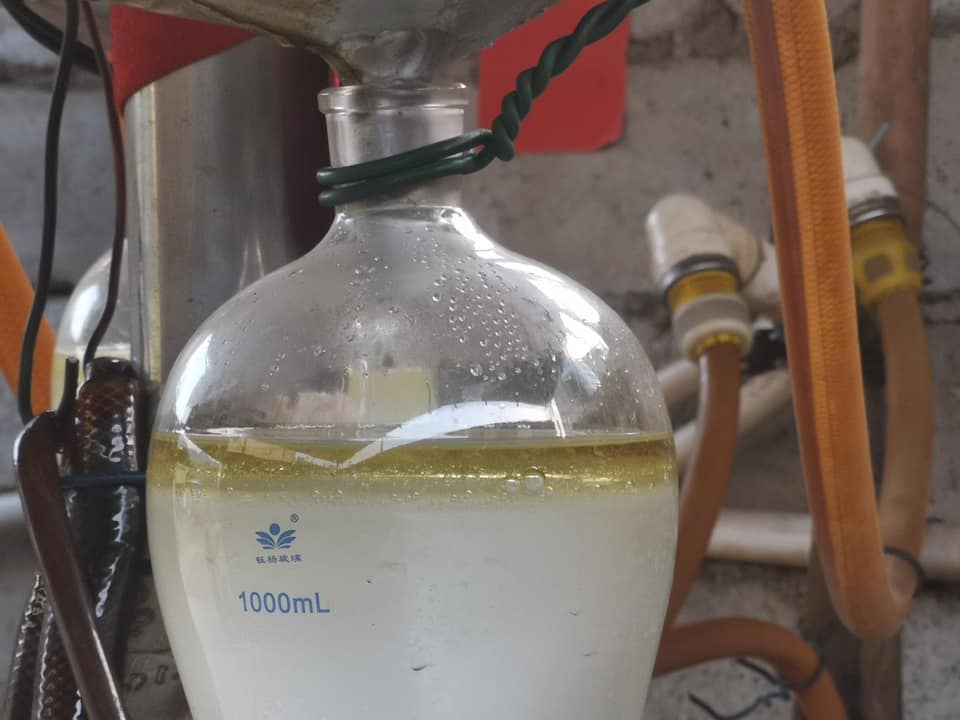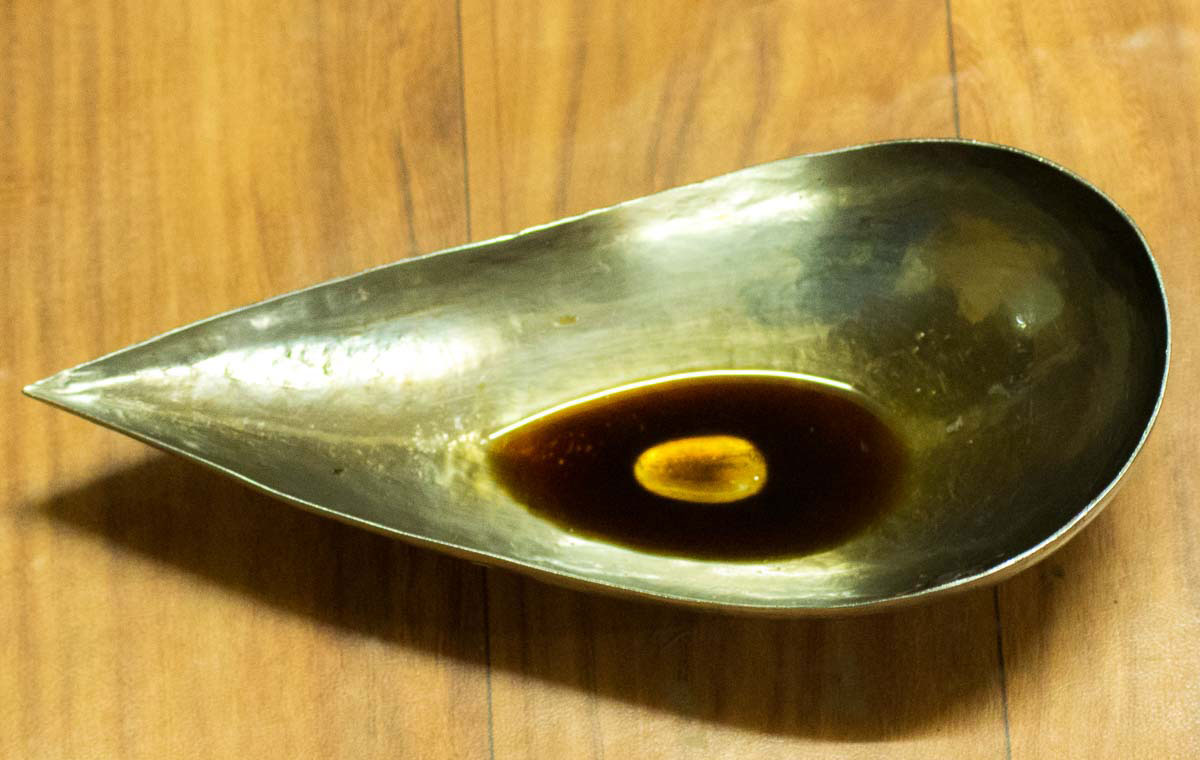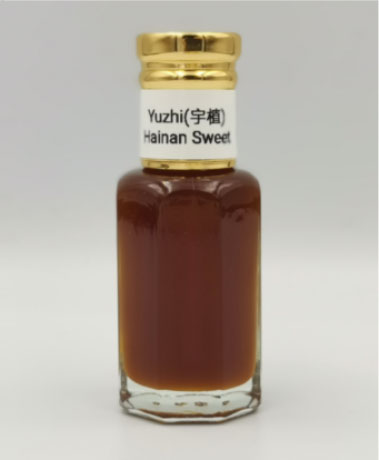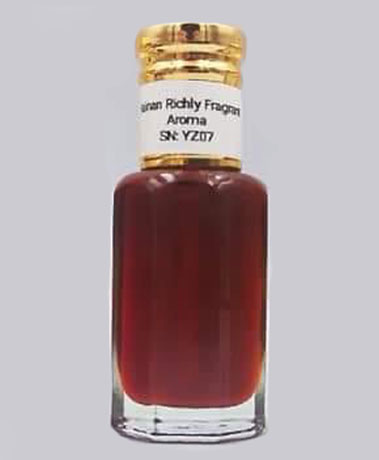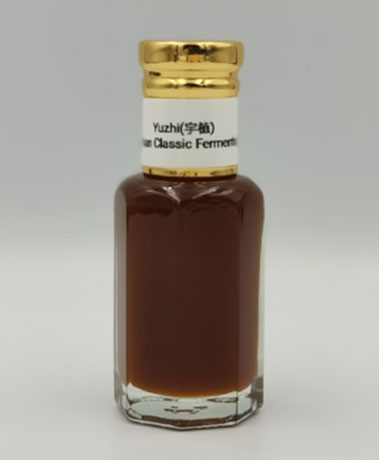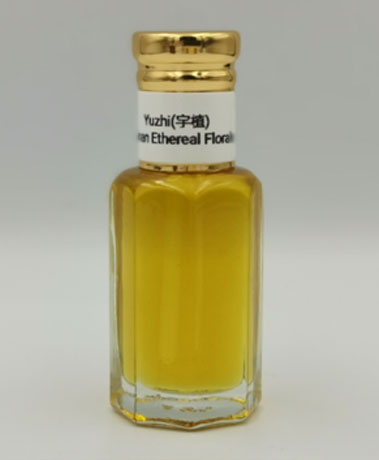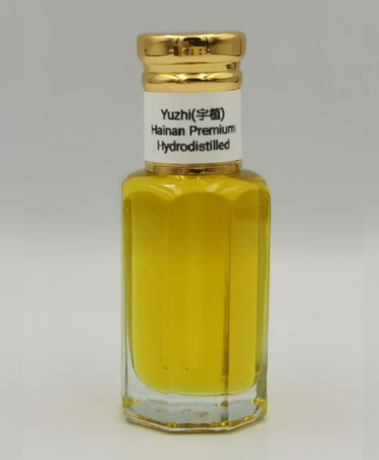What Is Oud Oil?
Agarwood oil, also known as “Oud Oil” in Arabic, is one of the world’s most highly valued and demanded essential oil. With a powerful, unique and distinctive aroma, it is known in many regions of the world as one of the rarest of fragrances, with a vast array of natural properties.
Oud has been well documented throughout human history as a mystical, sacred substance. Mentioned in various holy texts from the Bible, to the Hadith, and from Buddhist scriptures to the Sanskrit Vedas, among many more.
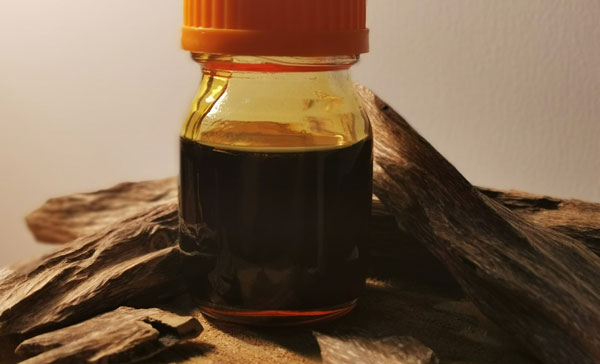
Beginning of a Journey: Oud Perfumes to Pure Agarwood Oils
Agarwood has taken the world of western perfumery by storm. Agarwood oil is being used in world class perfumeries as a fixative and is highly prized by European perfumers for mixing their best grade scents. Agarwood oil lends mesmerizingly heavy, deep and warm animalic, spicy, leathery, balsamic, woody notes to the perfumes.
Oud wood by Tom Ford. Creed Royal Oud. Christian Dior Leather Oud. Dolce & Gabbana Velvet Desert Oud. Incense Oud by Kilian. Armani Prive Oud Royal…… Oud seems like it’s everywhere, in every perfume!
For the people in the west, the use of oud in perfumery is something new. But for the people in the east, it is something deeply embedded in their history and culture!
If your love for oud perfumes of the west has made you curious about oud and you wish to know more about the pure oud oil and oud wood of the east then read on.
So What is this Oud Anyway?
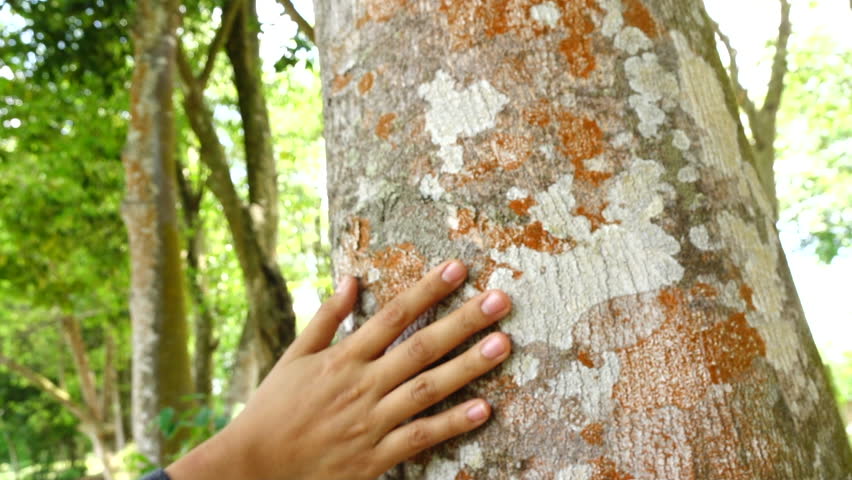
Oud (agarwood, aloe wood, eagle wood, gaharu) is formed in a tropical evergreen tree called Agar tree (Aquilaria species) which is believed to have originated from Assam, India. Agar tree or Aquilaria is a genus of fifteen species of trees, called lign aloes or lign-aloes trees, in the Thymelaeaceae, now native to southeast Asia. They occur particularly in the rainforests of Indonesia, Thailand, Cambodia, Laos, Vietnam, Malaysia, Northeast India, the Philippines, Borneo and New Guinea.
When this tree is attacked by certain fungi in its heartwood, the tree responds to this attack by releasing a type of resin to defend itself. This resin in the inside the tree gives rise to the formation of resinous heartwood which is known as oud.
Oud has been used in India, China, Japan and other Asian countries for centuries as an incense burnt in their homes as well in royal palaces. In places of worship and places for gathering of friends and family. For the celebration of a newborn and for the mourning of a dead one. It has transcended virtually every aspect of their lives.
Oud oil, distilled from oud, has been used as perfume, in its pure raw form as well blended with other natural perfume ingredients like sandalwood, musk, saffron, amber. It is one of the oldest materials used in perfumery and is considered to be one of the costliest perfumery raw materials.
Oud oil has also been used as medicine and for therapeutic benefits by Chinese, Indians and Arabs for centuries.
Oud oil is mystical, tantalising, alluring and intoxicating, so diverse and complex that words fail to capture its continuously evolving aroma. It can be sweet floral and vanillic and yet as the same time bitter, spicy, leathery. It is mysteriously everything that you wish to interpret it with and nothing that you do not interpret it with!
As for the very rare and most valuable oud oil distilled from wild trees in the jungles of Assam, it is soft and warm and stands out with its tangy, animalic odour to start with and later unfolds and matures with the smell of woods, trees, grass, rain forests, earth, fruits and flowers, resins, herbs and spices each deeply intertwined into each other and takes you to a different, ancient world.
Agarwood Trees in China
The agar tree grows to an average height of 21 meters and girth of about 1.5 to 2.4 meters. The stem is almost straight and fluted.
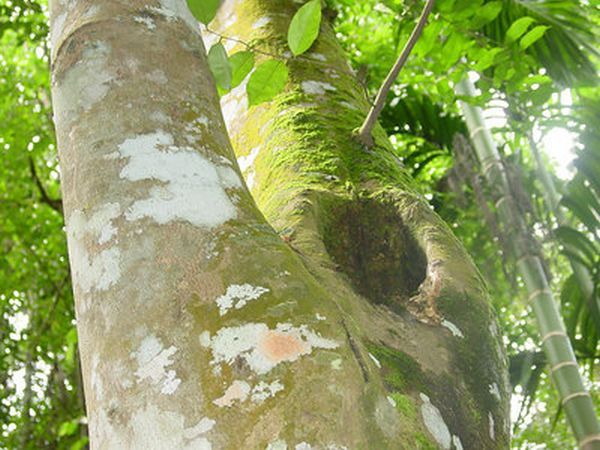
Agar plant prefers high humid, subtropical climate with rainfall 1800-3500 mm per annum. It grows from sea level upto 500 meters altitudes. It is a sun-loving plant and requires lot of sunshine. It prefers well-drained deep sandy loam to loam rich in organic matter but can grow in marginal soils and also in shallow soils over rocky beds with cracks and crevices. It grows well in hill slopes and forest environment.
The traditional agar growing areas show that it prefers acidic soil reaction. The mycorrhiza and other beneficial fungi which seems to be responsible for oil formation in the agar tree being soil borne requires acid soil for their population build up.
How is Resinous Heartwood formed in Agarwood Trees?
This is the most interesting part of the whole story when the death of an ordinary tree gives life to an extraordinary wood. A deadly, fatal attack by microorganisms on a giant tree transforms the attacked part into a priceless wood oozing with resin; odoriferous, dark and heavy.
The infection of fungi occurs when stem is injured or is bored by a larvae of a stem borer mainly Zeuzera conferta Walker which bores into the trunk of a standing tree and make tunnels inside the tree trunks.
Fungus enters the plant through this vertical hollow sometimes-zigzag tunnel inside the stem, which serves the initial sites of infections.
Later on infections spread on all sides slowly and gradually and ultimately a larger wood volume gets infected. More the insect infestation in the infected area, more is the chance of forming resinous wood.
Infections may also occur due to mechanical or natural injuries on the stem but it is very much localised.
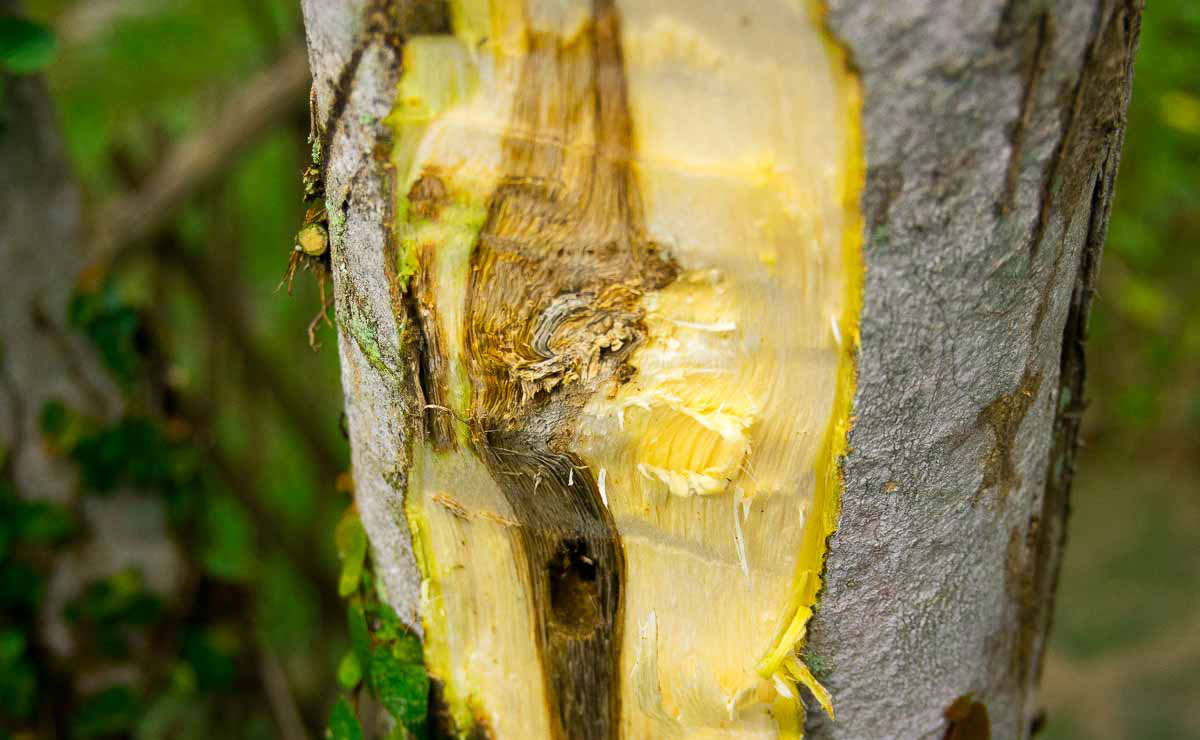
(Picture Above: Infected section of an Agarwood Tree)
Due to infections, oleoresins are accumulated in the infected wood and later become odoriferous. At the initial stage infections appear as brown streaks in the tissue. Accumulation of oleoresins goes on increasing with the increase of infection rate as well as ageing of infection. As more of oleoresins are deposited the intensity of colour of the infected wood increases and finally it becomes black due to increase in concentration.
The fungal infection takes long time to mature and trees about 50 years old have the highest concentration (2.5 – 5.0 kg/tree). Sometimes all the tissues under the bark of the tree may be found synthesising oil. True agarwood is heavier than water.
If the infection starts at a young age of 5 – 6 years, then a total 10 years age may be sufficient to get good quality agarwood or agaru in a plant.
Without infection century old tree may not bear a microscopic piece of agarwood.
Based on the intensity of attack the trees can be grouped as healthy, slightly attacked, moderately attacked and severely attacked trees. In a natural population about 25 to 30% of the trees may get naturally infected and thus productive.
How is Oud Oil Distilled?
The subject of distillation of oud oil from the oud wood is very vast however I will write about it very concisely here.
The wood is ground into very small pieces of powder, which are immersed in water and left to ferment over time. Then the material is transferred to distillation kettles and steamed. After heating, the condensed water and oil are captured in a container where the oil floats on top of the water since oil is lighter. Pure oud oil is then separated from water and taken in a different vessel.
Perpetual Journey into the World of Oud
The pure oud oil smells unlike anything on earth. Its heavenly. Different elements from the natural world of olfactory come together and lend their notes. The notes of earth, sky, air, rivers, forests, rain, fire, soil, animals all play in perfect harmony and orchestrate an aromatic symphony for the pleasure of olfactory senses!
The world of pure oud is a destination from where there is no wishing returning back to the world of oud perfumes. Those who come to the land of pure oud of the east, camp here permanently never wishing to return back to land of western oud perfumes!!
Check out few of our oud oils below to experience the true, pure and pristine Chinese agarwood oil.

